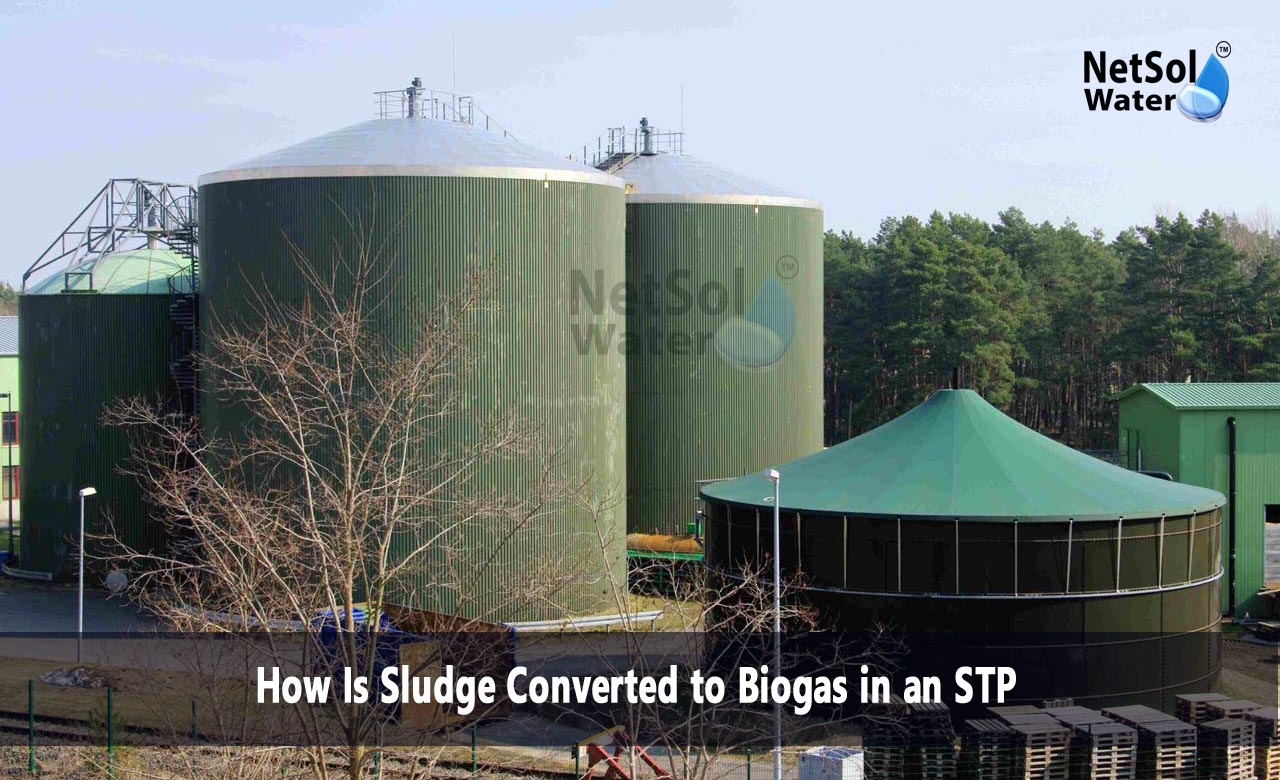How Is Sludge Converted to Biogas in an STP?
In today’s world, where sustainability is more important than ever, sewage treatment plants are not just about cleaning wastewater. They also help generate useful byproducts. One of the most interesting and eco-friendly ways to reuse waste is by converting sludge into biogas. We will will explain clearly how sludge converted to biogas in an STP is a smart and sustainable process, turning waste into clean energy.
What Is Sludge?
The solid and thick material left behind in wastewater is known as sludge. It includes natural matter, bacteria and other material that is taken out during treatment. If left untreated, sludge has the possibility of polluting. When handled the right way, especially as biogas, sludge becomes a strong source of renewable energy.
This is the reason why the treatment process of sludge into biogas in an STP is so much sought after these days, both by environmentalists and energy experts.
How Is Sludge Converted to Biogas?
The method used to transform sludge into biogas is called anaerobic digestion. Sludge is naturally digested by bacteria when the tank is sealed and there is no oxygen.
Sludge Collection
After wastewater is treated, the remaining sludge is collected from primary and secondary treatment stages. This sludge is rich in organic material and is sent to a digester.
Anaerobic Digestion
The digester is a large sealed tank where anaerobic bacteria thrive. These bacteria feed on the organic matter in the sludge. The process includes several steps:
· Hydrolysis – Large molecules are broken down into simpler compounds.
· Acidogenesis – These are converted into acids.
· Acetogenesis – The acids are then converted into acetic acid, hydrogen, and carbon dioxide.
· Methanogenesis – Methane-producing bacteria convert these into methane gas.
This is how sludge that is converted to biogas in an STP becomes possible: by a series of natural and controlled bacterial processes.
Biogas Production and Collection
The gas that is emitted in the digester primarily consists of methane and carbon dioxide. The primary component of biogas is methane, which can be tapped from the top of the tank in a digester.
The uses of Biogas produced by STPs
After biogas is collected in this method, it is not wasted. There are several purposes to which it can be applied.
· Using electricity generators, biogas is a source of electricity production.
· Heat can be used to provide warmth to water or to different buildings.
· Biogas can be used in some communities to prepare food.
· The gas can even be utilized to power equipment in the treatment plant itself, minimizing reliance on outside power.
Clearly, sludge transformed to biogas in an STP is not merely waste management—it is energy recovery.
Benefits of Converting Sludge into Biogas
There are numerous reasons why the process is gaining popularity:
Renewable Energy: Rather than burning coal or gas, STPs that bio-methylate sludge to produce biogas can produce their own clean fuel. This reduces carbon emissions.
Less Waste: The process of digestion lessens the volume of sludge to be discarded. Fewer landfill trips and less damage to the environment result from this.
Cost Savings: STPs that utilize their own biogas to generate power can reduce their electricity expenditures. In certain instances, they can sell excess energy.
Environmental Safety: Using biogas capture prevents methane gas from entering the environment. Methane causes pollution, but when it is converted to energy, it does not add to planet warming.
Therefore, the transformation of sludge to biogas in an STP is a beneficial practice for the environment, but it is also smart for business.
What Becomes of the Remaining Sludge?
Once digested, what is left behind is referred to as digestate. It is far safer and not as odorous as untreated sludge. This digestate can be:
· Utilized as fertilizer for agricultural crops.
· Further treated for safer elimination.
· Used for soil improvement works.
Thus, the sludge that gets transformed into biogas in an STP not only provides energy, but also leaves behind valuable material.
Problems in the Process
Although the advantages are considerable, there are some challenges:
· High initial installation costs for digesters and gas systems.
· Special monitoring is required to achieve the proper temperature and conditions for bacteria.
· Odor management and gas safety need to be properly managed.
Yet, as additional cities begin to invest in green infrastructure, the disadvantages are being overcome by improved design and newer technology.
Conclusion
The sludge converted to biogas in an STP is a great model of waste to value. Rather than perceiving sludge as a problem, it is now perceived as one that offers a solution: clean energy, decreased waste, and reduced costs. With the environment causing concern and energy needs growing, this practice is not only helpful—it's a necessity. By utilizing such green methods, we are one step closer to a cleaner, greener world.
Do you need an advice or assistance on selecting the best water and waste water treatment unit? We have solutions for all your problems!
Let us know your problem, our experts will make sure that it goes away.
For an assistance or related query,
Call on +91-9650608473, Or write us at enquiry@netsolwater.com



